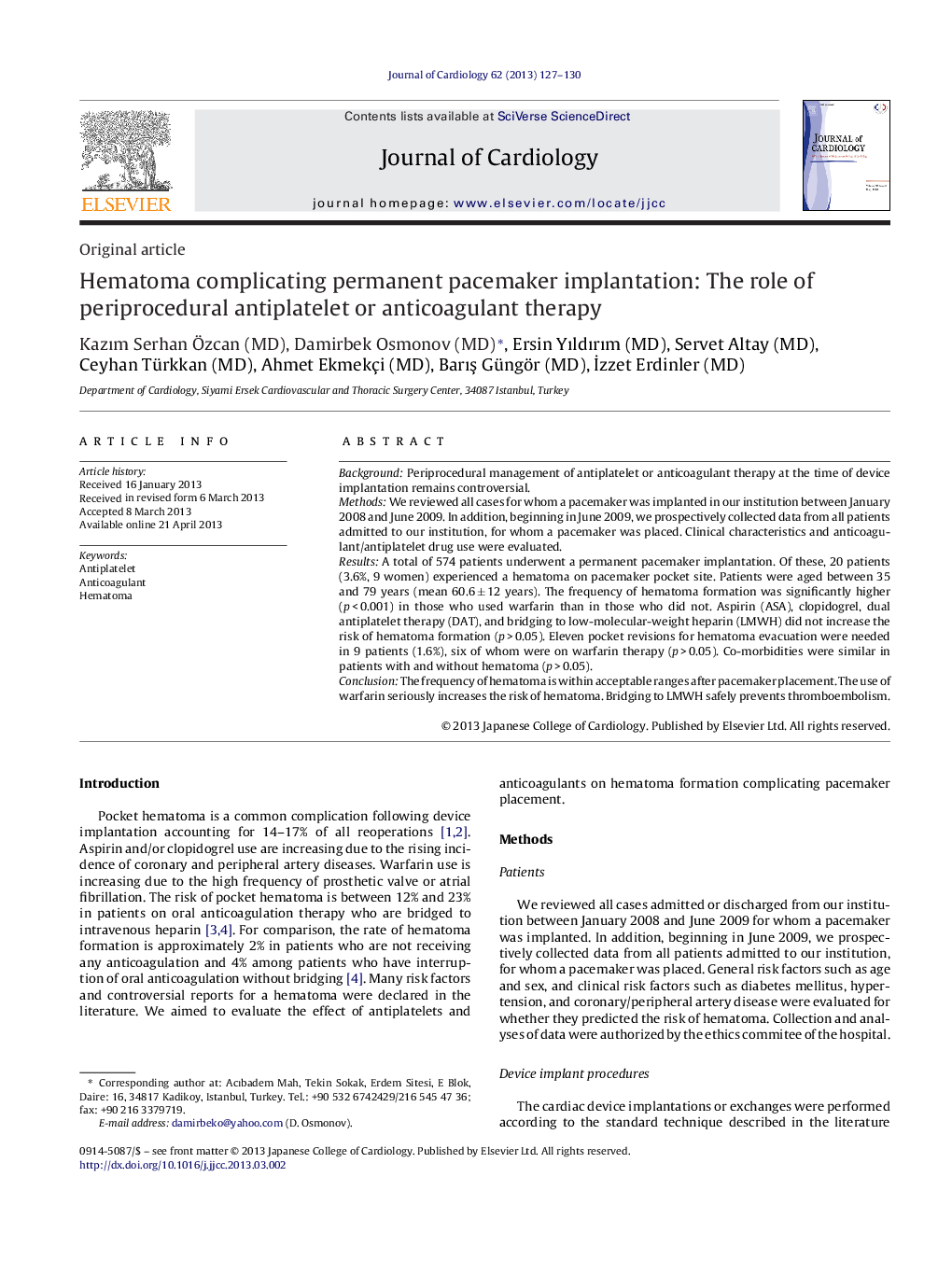| Article ID | Journal | Published Year | Pages | File Type |
|---|---|---|---|---|
| 5984071 | Journal of Cardiology | 2013 | 4 Pages |
BackgroundPeriprocedural management of antiplatelet or anticoagulant therapy at the time of device implantation remains controversial.MethodsWe reviewed all cases for whom a pacemaker was implanted in our institution between January 2008 and June 2009. In addition, beginning in June 2009, we prospectively collected data from all patients admitted to our institution, for whom a pacemaker was placed. Clinical characteristics and anticoagulant/antiplatelet drug use were evaluated.ResultsA total of 574 patients underwent a permanent pacemaker implantation. Of these, 20 patients (3.6%, 9 women) experienced a hematoma on pacemaker pocket site. Patients were aged between 35 and 79 years (mean 60.6 ± 12 years). The frequency of hematoma formation was significantly higher (p < 0.001) in those who used warfarin than in those who did not. Aspirin (ASA), clopidogrel, dual antiplatelet therapy (DAT), and bridging to low-molecular-weight heparin (LMWH) did not increase the risk of hematoma formation (p > 0.05). Eleven pocket revisions for hematoma evacuation were needed in 9 patients (1.6%), six of whom were on warfarin therapy (p > 0.05). Co-morbidities were similar in patients with and without hematoma (p > 0.05).ConclusionThe frequency of hematoma is within acceptable ranges after pacemaker placement. The use of warfarin seriously increases the risk of hematoma. Bridging to LMWH safely prevents thromboembolism.
